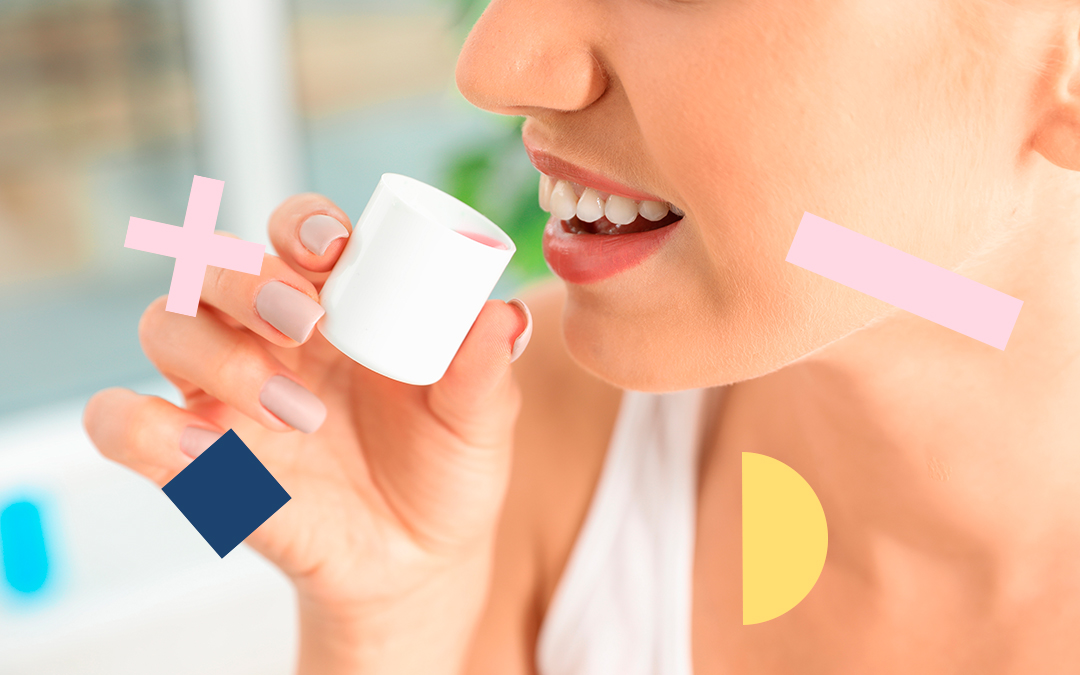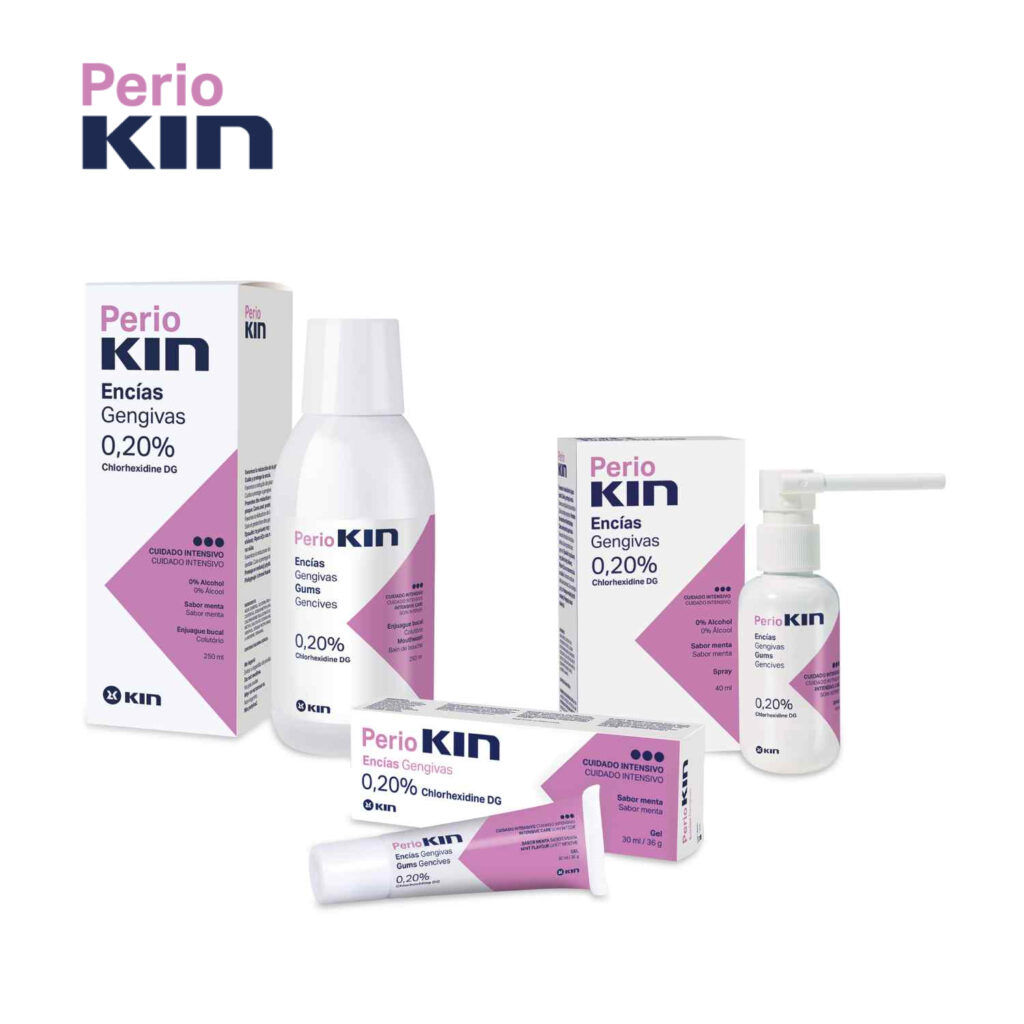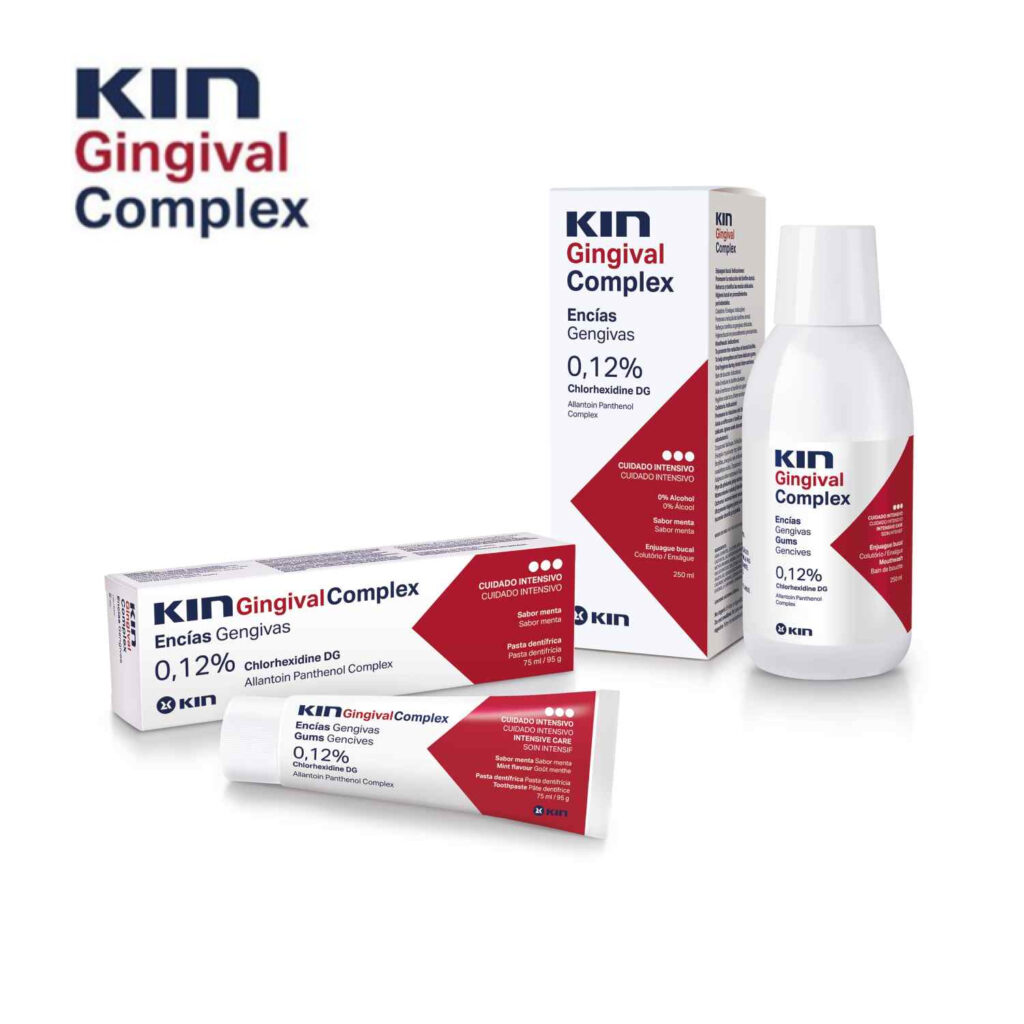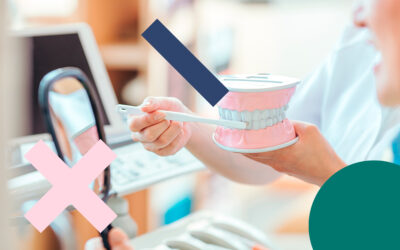Chlorhexidine is the most widely used antiseptic in dentists' surgeries and in pharmacies to prevent and treat oral infections. It has a broad spectrum of action against bacteria, fungi and yeasts, limiting their proliferation quickly and effectively.
Many oral hygiene products containing chlorhexidine are available for use in the dental clinic and also for further treatment at home. These products are recommended and prescribed by a dentist, but when using chlorhexidine it is necessary to follow specific guidelines to obtain the desired effect.
What is chlorhexidine?
Chlorhexidine is an antiseptic with bactericidal and fungicidal action that can be found in the formulation of oral hygiene products such as toothpastes, gels and mouthwashes.
The use of chlorhexidine focuses on the prevention and intensive care of periodontal diseases and infections. Thanks to its activity, it kills pathogenic microorganisms that develop in the oral mucosa, especially in high-risk situations such as oral surgery or any other highly invasive intervention.
Uses of chlorhexidine in dentistry
As long as a person is in good oral health, it is not necessary to use chlorhexidine as a preventive for oral infections. Chlorhexidine is usually recommended by a dental professional when an infection is detected.
In which cases is chlorhexidine recommended? There are several situations in which patients can use these products to complement their oral hygiene:
Periodontal disease
In a situation of gingivitis or periodontitis, products with chlorhexidine are excellent adjuvants to maintain healthy gums. When gums suffer from any type of infection caused by bacteria or fungi, chlorhexidine limits or prevents the growth of microorganisms for a better recovery.
Periodontal surgery
In order to limit the risk of complications, chlorhexidine is recommended after oral surgery such as tooth extraction, implant placement, or any operation that carries a high risk of infection.
Oral mucosal lesions
Chlorhexidine is a substance that helps wounds inside the mouth to heal quickly. For the treatment of some types of mouth sores or canker sores, the dentist may recommend rinsing with this type of antiseptic, preventing the formation of biofilm on the wounds.
How is chlorhexidine used?
To make good use of chlorhexidine, it should always be prescribed by a dentist .
Chlorhexidine mouthwashes do not need to be diluted with water as they contain the right concentration of active ingredients to be used directly.
It is very simple to use. Following the dentist's guidelines, the patient should rinse their mouth two or three times a day, every 8 to 12 hours, keeping the product in the mouth for 30 to 60 seconds to promote its action.
After rinsing, the product is spat out and it is recommended to Do not swallow food and drinks for at least 30 minutes.
Chlorhexidine remains in the mouth for 8 to 12 hours, remaining in contact long enough to eliminate or inhibit the causative agent of the infection.
It is not necessary to rinse the mouth with water after using the mouthwash.
In the case of gels with chlorhexidine, they should be applied to the gums using a brush soft or a cotton swab, always after meals, avoiding food or drink for at least 30 minutes afterwards. Spray products allow for easier and more comfortable application to the area to be treated, in the case of localised periodontal treatment. This format is particularly suitable for people with reduced mouth opening or disabilities who are unable to perform normal hygiene.
For best effect, chlorhexidine products must apply at night before going to sleep and without rinsing.The gums are then treated for a longer period of time, favoring the recovery of the gums. Maintain a healthy mouth with daily care routines.
Discover our products for daily oral care

Oral care products with chlorhexidine
The main form of presentation of chlorhexidine for oral health care is mouthwashes. Nowadays, other formats such as toothpastes, sprays or bioadhesive gels are available for a more complete treatment for each patient.
Within the different lines of products for gum care, KIN has a wide range of rinses with chlorhexidine in variable composition. The one with 0.05% chlorhexidine, for gum maintenance, favours the control of dental biofilm when there is a risk of gingival pathology or when it is already established, facilitating the recovery of gingival health in patients.
For a more intensive care after periodontal treatment, the line KIN Gingival Complex a concentration of 0.12% chlorhexidine.
The line PerioKINline, with its 0.20% chlorhexidine concentration, is designed to control dental biofilm in the presence of more severe diseases such as periodontitis.
In addition to the Mouthwash PerioKINchlorhexidine application can be localised using the PerioKIN® Mouth Gel or PerioKIN Oral Spray.
Precautions in the use of chlorhexidine
Due to the composition of oral hygiene products containing chlorhexidine, it may slightly change the taste of food. Another adverse effect of this antiseptic is progressive staining of the teeth. For this reason it is not recommended for use without medical advice.
The side effects of chlorhexidine are completely reversible. After treatment, in case of staining, a visit to the dental clinic for oral hygiene is necessary.


 How to relieve pain with newly placed braces?
How to relieve pain with newly placed braces? How to keep your breath fresh?
How to keep your breath fresh? 10 Tips to take care of the oral health of the little ones
10 Tips to take care of the oral health of the little ones




